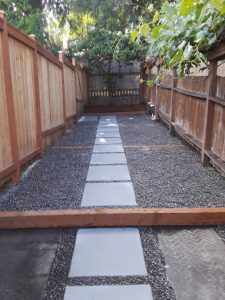Tips for a Thriving Landscape in Seattle
Planting trees is one of the most rewarding experiences for both landscapers and homeowners, especially for busy gardeners looking to create a beautiful and healthy environment for their families. Trees not only enhance the beauty of your property but also provide shade, improve air quality, and contribute to the overall health of our planet.
In Seattle, with its unique climate and soil conditions, proper planning and care are essential for successful tree planting. Here are some key tips to ensure your trees thrive for years to come!
Summary Notes
- Choose the Right Species: Select tree varieties that match Seattle’s climate and available space.
- Prepare Soil: Test pH and nutrient levels to create a healthy foundation for your trees.
- Planting Techniques: Proper techniques are crucial for promoting tree health.
- Ongoing Care: Regular attention ensures long-term growth and vitality.
Recommended Trees for Seattle
- Red Maple: Known for its stunning fall color and ability to thrive in Seattle’s climate.
- Western Red Cedar: A native favorite that flourishes in Seattle’s weather.
- Japanese Maple: Adds aesthetic charm and thrives in partial shade, perfect for Seattle gardens.
Before Planting
Choose the Right Tree
- Climate Compatibility: Look for tree species that are well-suited to Seattle’s temperate climate. Trees like the red maple or western red cedar are great choices, as they thrive in the Pacific Northwest.
- Space Considerations: Consider the mature size of the tree. Make sure it will have enough room to grow without overcrowding other plants or structures.
Prepare the Soil
- Soil Testing: Before planting, test the soil’s pH and nutrient levels. Many local garden centers in Seattle offer soil testing kits, which can help you understand what your soil needs to promote healthy tree growth.
- Amendments: Based on your test results, amend the soil with compost, organic matter, or fertilizers as needed to ensure a rich, healthy foundation for the tree’s roots.
Select Healthy Trees
- Inspect for Issues: When purchasing a tree, look for healthy leaves and a sturdy trunk. Avoid trees with visible signs of disease or pests, such as discolored or damaged leaves, which could affect the tree’s growth and health.
Planting
Dig the Right Hole
- Hole Dimensions: The planting hole should be 2-3 times wider than the root ball, but only as deep as the root ball itself. This allows the roots to spread comfortably in the surrounding soil, promoting healthy growth.
- Loosen the Soil: Break up the soil at the bottom and sides of the hole to allow the roots to penetrate easily and grow into the surrounding earth.
Handle Roots with Care
- Container Removal: Carefully remove the tree from its container or burlap, being gentle with the root ball. Minimizing disruption to the roots reduces transplant shock.
- Root Loosening: If the roots are tightly bound (common in container-grown trees), gently loosen them with your hands or a small tool. This encourages the roots to grow outward into the surrounding soil.
Plant at the Right Depth
- Depth Check: Ensure the tree is planted at the same depth it was in its container, with the root flare (where the trunk meets the roots) level with the soil surface. Planting too deep can suffocate the roots, while planting too shallow can expose them to the elements.
After Planting
Water Thoroughly
- Initial Watering: Immediately after planting, water the tree thoroughly to help settle the soil and ensure the roots are hydrated. During the first year, water 2-3 times a week, especially during dry spells. A soaker hose can help deliver water deep into the soil.
Mulch Around the Base
- Benefits of Mulching: Apply a 2-inch layer of mulch around the base of the tree. Mulch helps retain moisture, suppresses weed growth, and regulates soil temperature, creating a favorable environment for root development.
Stake if Necessary
- Staking for Stability: If the tree is top-heavy or planted in a windy location, staking may be necessary. Use soft ties to protect the tree’s bark while providing support until the roots establish themselves.
Ongoing Care
Fertilize Annually
- Feeding Schedule: In early spring, apply a balanced fertilizer to support the tree’s growth. Follow the fertilizer instructions to avoid overfeeding, as too much fertilizer can harm the tree.
Prune Regularly
- Promote Healthy Growth: Prune your tree each year to remove dead or diseased branches, maintain its shape, and encourage the development of new growth. Proper pruning helps prevent disease and pests from taking hold.
Monitor for Pests and Diseases
- Early Detection: Regularly inspect your tree for pests or diseases. If you notice signs of infestation or disease, take action immediately to prevent further damage. Early detection is crucial to maintaining the tree’s health and longevity.
Final Thoughts
By following these planting and care strategies, you can ensure your trees thrive and contribute to the beauty and health of your Seattle landscape for years to come. Whether you’re planting a majestic red maple or a graceful Japanese maple, trees offer long-lasting benefits—from shade and beauty to cleaner air. Happy planting, and here’s to a lush, thriving landscape!


















